Welcome to Poznan! This is a Polish city where medieval walls rub shoulders with cutting-edge design, and lively student streets meld into centuries of royal history. If you’re here, you likely want a travel guide that highlights things to do in a place both dynamic and unassuming. Poznan might not initially boast the global acclaim of bigger Polish hubs like Warsaw or Kraków, but it packs a surprising punch. Between a beautifully preserved Old Town, an evolving modern art scene, and pockets of green for breezy escapes, this city invites you to linger longer than you’d expect.

You’re probably looking for a city that balances Polish cultural depth with a dash of fun. You want to see iconic squares, historical relics, but also sink into local cafés or maybe stroll by a tranquil lake. You’re curious if Poznan can keep you entertained for a weekend or longer. Rest assured, it can—and in ways that weave tradition with youthful energy. This guide condenses must-see spots, local eats, quick day trips, and more, so you can piece together an itinerary with zero guesswork.
Our Poznan Travel Guide on Samuel and Audrey YouTube Channel (Hosted By Nomadic Samuel and That Backpacker)
When a city offers a swirl of museums, churches, markets, and unexpected modern corners, you risk feeling overwhelmed. Which parts of Poznan are truly unmissable, and which can you skip if you’re short on time? Are language barriers going to throw you off or is it easy to navigate? And how does the city’s layout influence where you stay or how you get around? We’ll tackle these snags, giving you direct, practical info for smooth travel.
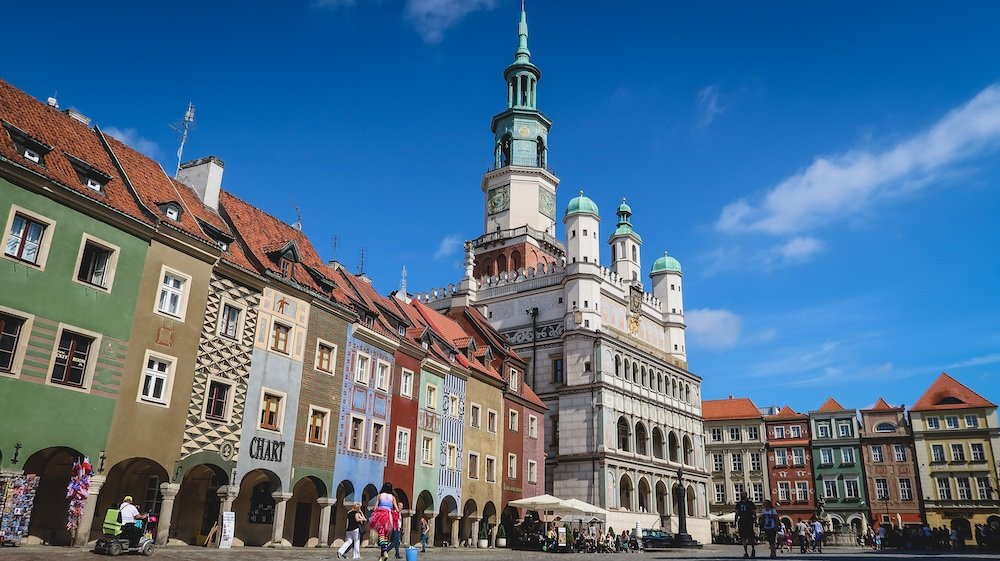
Pozan Attractions
Some of the top highlights of visiting Poznan include wandering the Old Market Square at dawn, sipped coffee near the Royal Castle, and seeing Cathedral Island bathed in early light. Moreover, Poznan suits various travelers. If you’re a culture buff, you’ll love the cathedrals, museums, and monuments. Families can enjoy open-air spaces, modern parks, and easy transport. Foodies will delight in Polish staples plus local takes on global trends. Budget explorers find hostels near vibrant nightlife, while couples might appreciate romantic strolls around a centuries-old square. If you’re in Poland for a longer trip, Poznan can become a quick or extended stop that reveals an alternative facet of the country.
Poznan merges old and new with a relaxed confidence. Ahead, we’ll detail the Top 10 Things To Do—from iconic squares and regal castles to urban oases and modern art spots—providing a balanced view of this vibrant city. Then we’ll deep-dive into local cuisine, tours, accommodations, day-trip ideas, transport insights, and final reflections. Ready to explore a city that’s at once rooted in royal heritage and abuzz with contemporary energy? Let’s go.

Top 10 Things To Do in Poznan, Poland For Visitors
Poznan dazzles with an eclectic range of historical landmarks, cultural nooks, and refreshing green spaces. Whether you’re a seasoned Euro-traveler or a newcomer to Poland, these are the things to do that anchor your journey.Dive into these highlights for a comprehensive slice of Poznan.
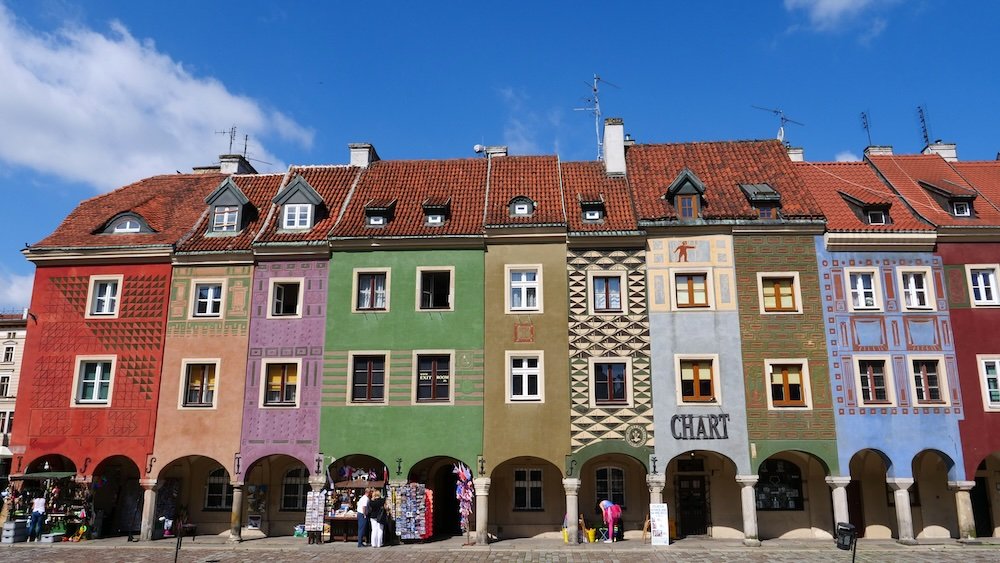
1) Old Market Square (Stary Rynek) with Poznań Town Hall (Ratusz)
Stepping into Old Market Square, you’ll sense medieval and Renaissance charm colliding. Colorful merchant houses frame the cobbled plaza, their facades bearing intricate motifs that whisper of old trade wealth. The showstopper is the Poznań Town Hall (Ratusz), an ornate Renaissance building that hosts daily goat-butt performances at noon. Inside, a small historical museum unfolds stories of city traditions and the famed mechanical goats. By day, the square hums with cafés and buskers; come evening, it radiates a lounge-like warmth under glowing lamps. You’ll likely pause mid-stroll just to soak it all in.
- Architectural Styles: Renaissance hall, Gothic influences, row houses with pastel color palettes.
- Goat Show: At noon, mechanical goats butt heads in a whimsical clock-tower display—arrive early to secure a front spot.
- Souvenir Browsing: Nearby shops peddle amber trinkets, local crafts, or city-themed postcards.
Tip: Come in the morning if you want photos minus heavy crowds—the golden light also flatters the vibrant facades.
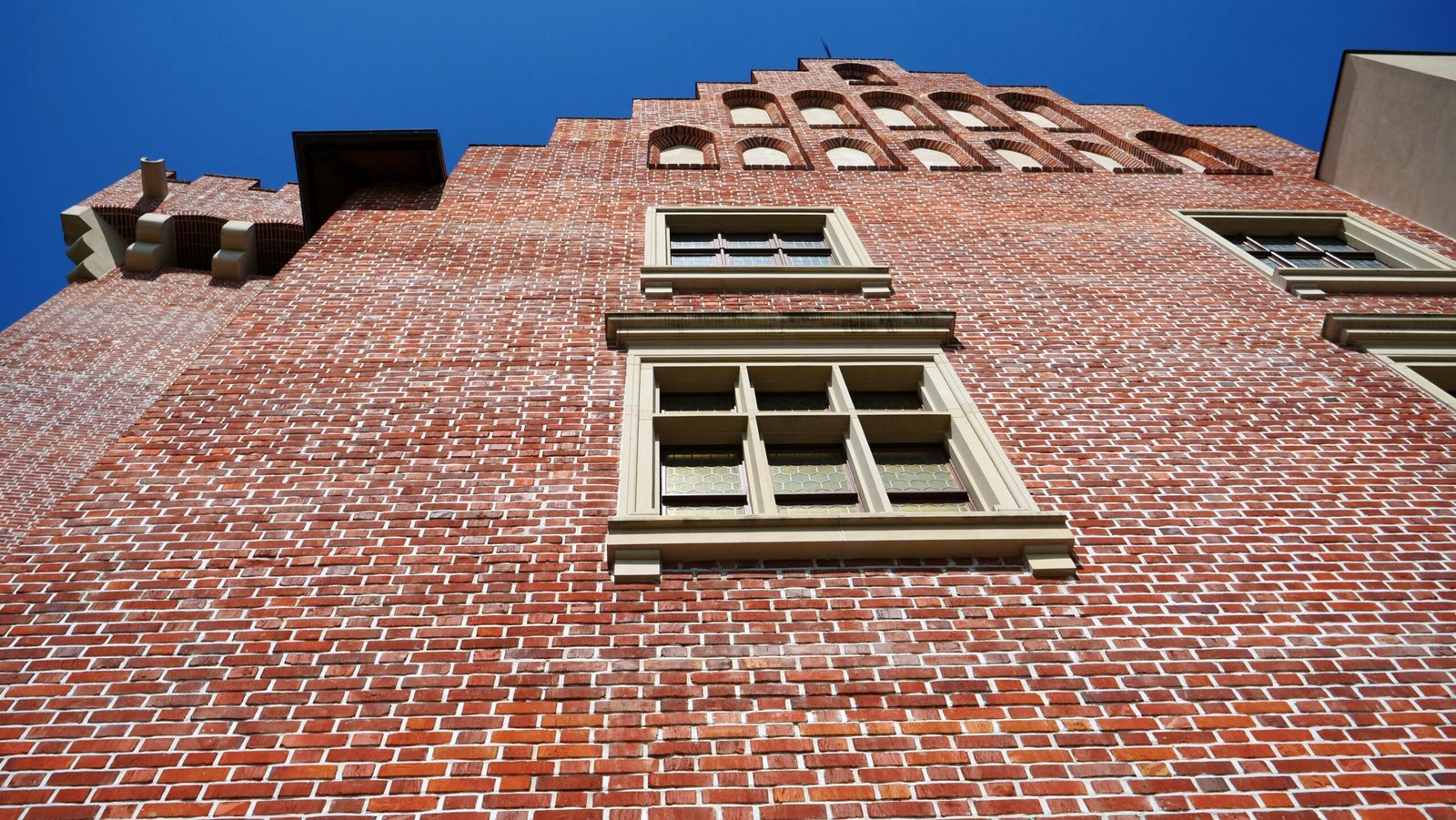
2) Royal Castle in Poznań (Zamek Królewski w Poznaniu)
The Royal Castle perches on a slight hill, its red brick towers reminding visitors of Poland’s regal lineage. Rebuilt several times after wars, it blends old foundations with modern restorations. Inside, you’ll find halls showcasing artifacts from Prussian times, plus vantage points for panoramic city views. Each chamber brims with touches of royal ambition—marble details, tapestries, or exhibits chronicling Poznan’s strategic significance. Venture into the courtyard to appreciate glimpses of the city below, the hustle softened by a castle’s vantage. If you crave a taste of royal Poland beyond Warsaw’s pomp, this spot in Poznan delivers.
- Entry: Varies by sections open—check if the tower climb is included or separate.
- Exploration: Some parts remain under restoration, rotating displays or restricted areas occasionally.
- Nearby: Stroll the adjacent park for a quiet midday break or vantage angles of the castle’s exterior.
Tip: Ask guides about ephemeral exhibits—sometimes the castle hosts short-term displays on local history or art.
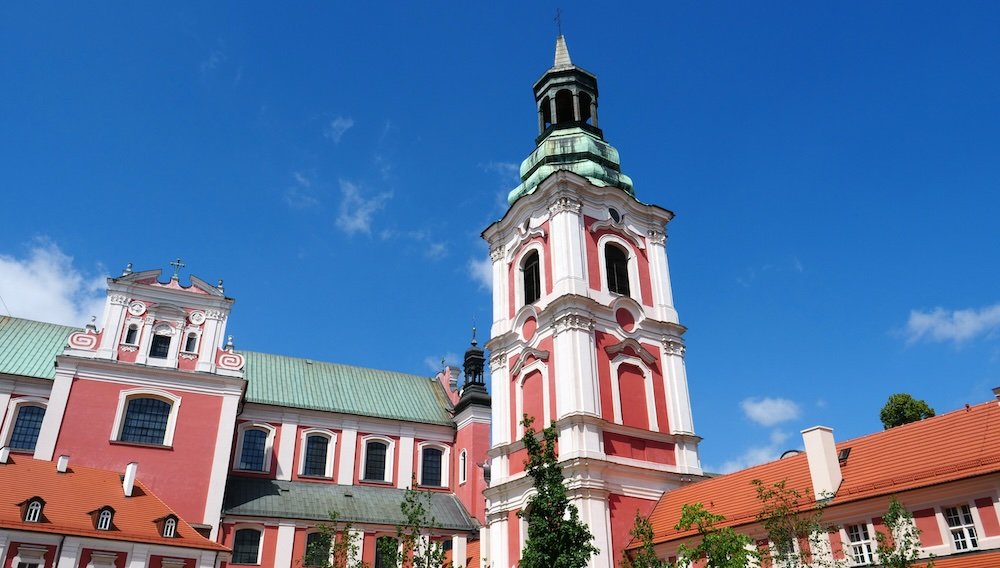
3) Former Jesuits College
A short walk from the Old Town unveils the Former Jesuits College, a stunning baroque complex repurposed over centuries. Once an institution for Jesuit education, it now houses administrative offices and cultural segments, but its architectural grace remains. Crisp white facades, symmetrical courtyards, and decorative portals exude a quiet academic nobility. Inside, you might catch glimpses of historical corridors or chapels that survived reconfigurations. Locals often pass by without a second glance, but stepping in reveals a calm retreat amid city bustle. It’s a testament to Poznan’s layered tapestry—where religious heritage and public function fuse seamlessly.
- Admire: Baroque columns, ornate balconies, and subtle stone carvings that survived transitions.
- Photo Spots: The courtyard, if open, can be a serene locale for capturing architectural lines.
- Location: Near major Old Town thoroughfares—easy to pair with a broader historic walk.
Tip: Check if tours are available—some staff might share tidbits on Jesuit history if approached politely.
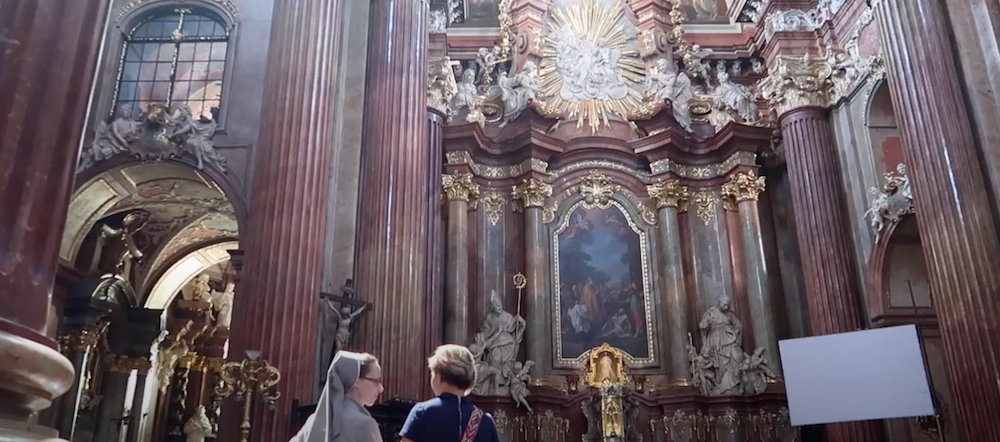
4) Poznań Cathedral (Fara Poznanska)
Also known as Fara Poznańska, this cathedral stands as a baroque masterpiece. Step inside to behold opulent chapels, gilded altars, and swirling frescoes overhead. The interplay of light through tall windows adds a heavenly aura, reflecting on the polished floors. Unlike some gloomier Gothic spaces, Fara feels vibrant, almost theatrical in its decorative splendor. If you’re lucky, you might catch an organ rehearsal, the pipes resonating with rich timbre. For worshipers or architecture fans, it’s a soulful stop that underscores Poznan’s devotion to artful design.
- Admiration: The high altar’s baroque detailing is especially ornate—take a moment for close inspection.
- Atmosphere: Churchgoers and tourists mix—be respectful if a service is in progress.
- Free Entry: Typically no cost, though donations help maintain the interior.
Tip: Visit midweek to avoid Sunday mass crowds and snap better photos of the baroque finery.
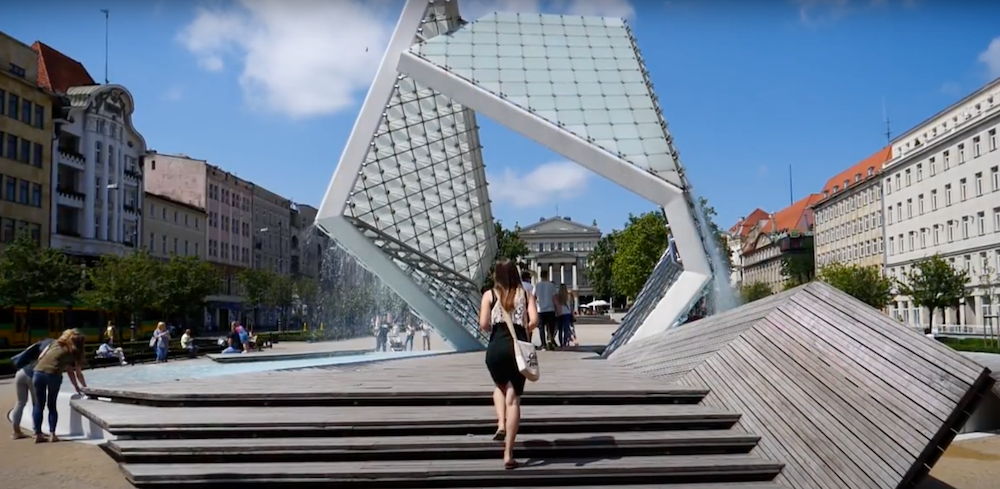
5) New Town in Poznan (Fontana Wolności and Imperial Castle [Zamek Cesarski w Poznaniu])
Modern meets historical in Poznan’s New Town, anchored by the Fontana Wolności (Fountain of Freedom)—a futuristic structure set amid sleek pavements. Nearby, the Imperial Castle (Zamek Cesarski) adds an unexpected regal twist: built for German emperors, it blends neo-Romanesque lines with 20th-century history. Inside, you’ll spot halls repurposed as cultural spaces or small galleries. The area around the fountain buzzes with shops, cafes, and open plazas, reflecting Poznan’s contemporary pulse. In warmer months, local events—concerts, art fairs—spring to life, fusing old imperial grandeur with fresh city rhythms. If you want to see beyond the Old Town’s medieval vibe, this district broadens Poznan’s character.
- Imperial Castle Tour: Some guided routes highlight Kaiser Wilhelm II’s era or WWII transformations.
- Fountain’s LED Light Shows: Evenings sometimes see colorful water displays.
- Shops & Cafes: Modern malls or smaller boutiques for souvenirs, clothes, or coffee breaks.
Tip: Combine a visit here with a short break at a local cafe—watch the fountain show if scheduled.
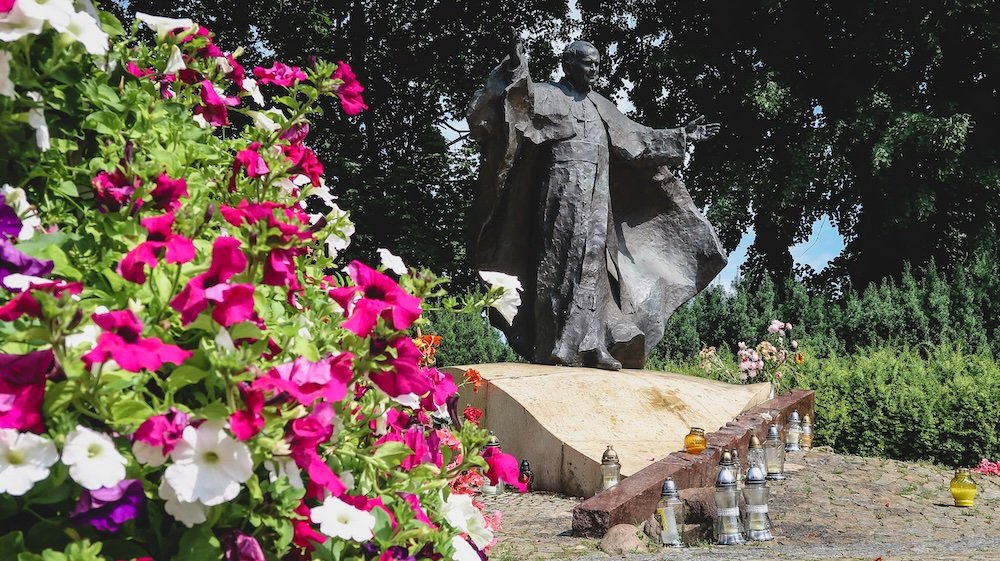
6) Cathedral Island (Ostrów Tumski)
Ostrów Tumski, Poznan’s Cathedral Island, stands as the cradle of Polish statehood. The twin spires of the Cathedral of St. Peter and Paul pierce the skyline, marking Poland’s oldest cathedral site. The island’s museums narrate tales of the first Piast rulers, Christianization, and the area’s strategic position at the Warta River. Cobblestone pathways lead you around lush greenery, smaller chapels, and occasional archaeological digs. Visiting at sunrise or dusk imbues the island with a tranquil, almost mystical aura. For a deeper grasp of Poland’s roots, Ostrów Tumski is a pilgrimage worth taking.
- Archaeological Finds: Some sites display relics from the earliest Polish monarchy—foundations of early churches or palaces.
- Audio Guides: The cathedral area might offer earphones, unveiling each segment’s story.
- Tip: If you have time, pop into the Archdiocesan Museum for sacred art glimpses.
Tip: Don’t skip the Golden Chapel inside the cathedral—it’s the resting place of Poland’s first rulers, lavishly decorated.
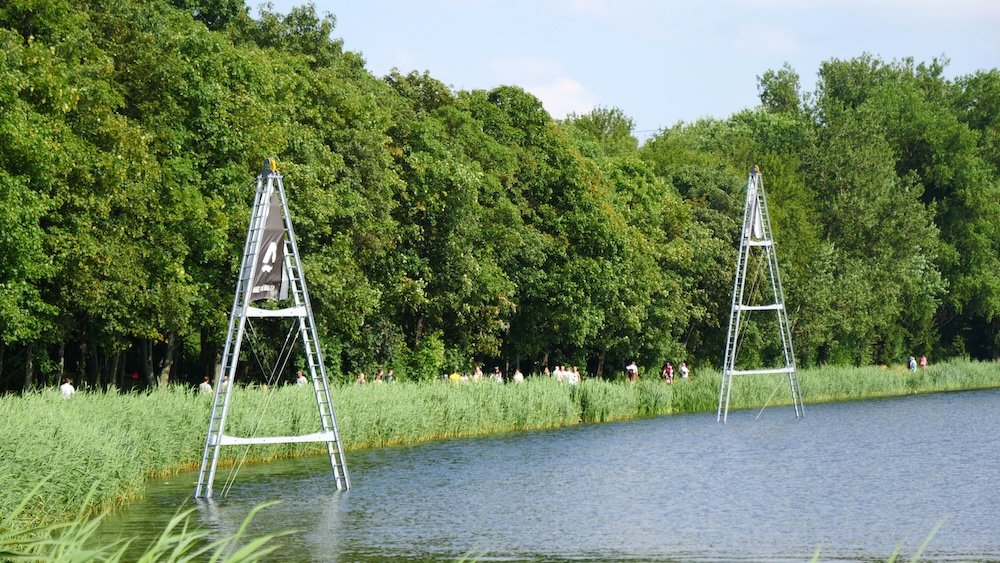
7) Lake Malta (Maltański Reservoir)
When urban exploring tires you, Lake Malta offers watery tranquility. A short ride from downtown, this reservoir isn’t just for scenic looks—it’s loaded with recreation. Jogging paths, bike trails, a mini zoo, even an artificial ski slope in winter. Summer sees paddleboats dotting the waters, and lakeside cafes buzzing with families. The Malta Ski station hosts events year-round, while an aqua park invites splashy fun. If your itinerary demands fresh air, Lake Malta seamlessly shifts your city break into an outdoor mini-vacation.
- Activities: Kayaking, rollerblading, mini golf, plus possibly carnival rides in peak months.
- Seasonal Appeal: Winter transforms slopes for toboggan runs; summer fosters festival vibes.
- Accessibility: Buses or trams connect easily; also a mild ~30-minute walk from city center.
Tip: Check event listings—Lake Malta often hosts regattas or music festivals that can liven the scene.

8) KontenerART
For a funky, artsy atmosphere, head to KontenerART, a container-based cultural spot by the Warta River. Think shipping containers reimagined as creative spaces—hosting pop-up bars, art exhibitions, workshops, or live music gigs. Graffiti murals sprawl across steel walls, while locals lounge on beach chairs sipping craft beers. It’s bohemian in spirit, injecting a fresh vibe into Poznan’s established art scene. Evenings can be electrifying with DJs or mini-concerts, bridging the gap between edgy subcultures and mainstream fun. If you crave a raw, offbeat corner of the city, KontenerART is your jam.
- Seating: Expect a mix of pallets, beanbags, or bench seats—chill ambiance guaranteed.
- Events: Schedules fluctuate; sometimes spontaneous jam sessions or curated exhibitions pop up.
- Tip: Younger crowd typically dominates, though all ages can enjoy the vibe on calmer afternoons.
Tip: Bring some cash—not all container bars may handle card payments, especially during busy nights.
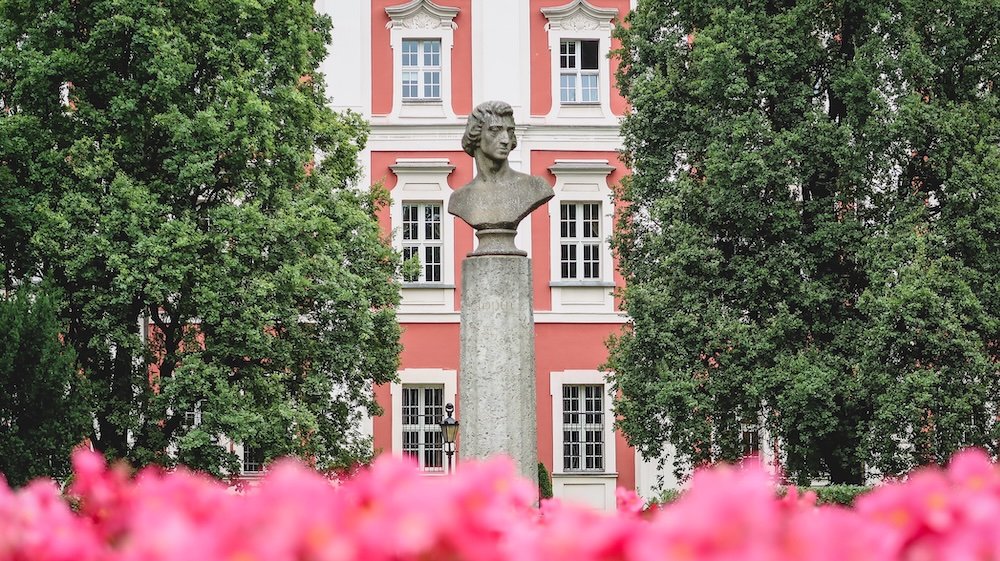
9) Frédéric Chopin Park and Archaeological Museum (Muzeum Archeologiczne w Poznaniu)
A peaceful pause awaits in Frédéric Chopin Park, offering manicured greenery, shady walks, and sometimes open-air concerts on summery weekends. Within strolling distance, the Archaeological Museum (Muzeum Archeologiczne w Poznaniu) reveals glimpses of ancient times: from Paleolithic artifacts to Slavic relics. Its interactive segments engage both kids and curious adults, blending scholarly detail with hands-on fun. The synergy between park and museum fosters a laid-back outing—explore prehistoric secrets, then lounge amid nature’s calm. If you’re in the mood for an unhurried afternoon, it’s a pleasing combo. You’ll also sense how Poznan respects both high culture and quiet public spaces.
- Family Friendly: Great for multi-generational groups; kids can burn energy in the park post-museum.
- Exhibits: The museum occasionally hosts themed events—like reenactment days or workshop sessions.
- Tip: Some benches spotlight local flora details—worth reading if you enjoy horticultural tidbits.
Tip: Visit midday—you’ll avoid early crowds, plus the park’s trees offer respite from scorching noon sun.
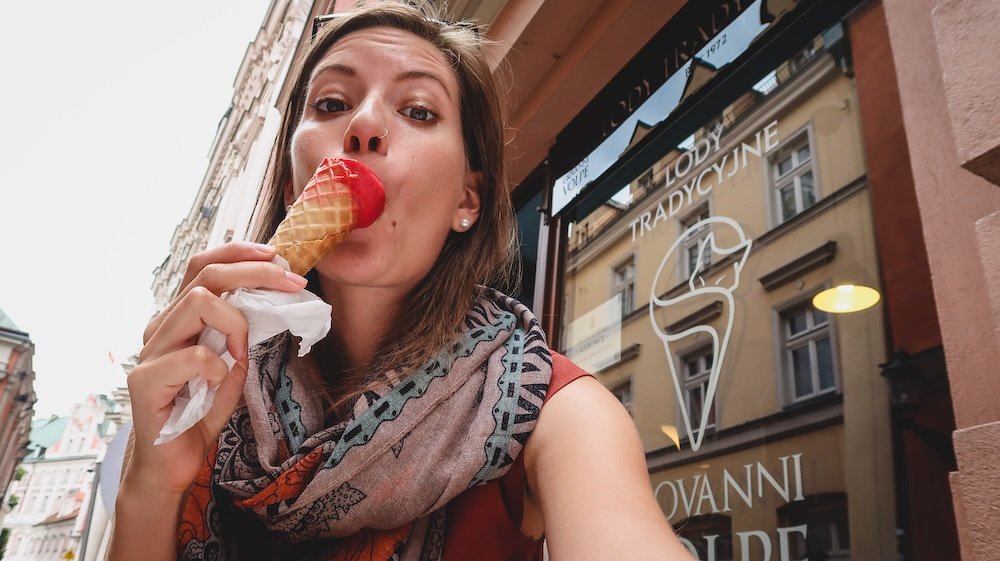
10) Ice Cream (lody)
Polish lody (ice cream) can feel like a must-try attraction in its own right—especially in Poznan. Vendors whip up creative flavors, from staple chocolate or strawberry to funky combos like lavender-honey or salted caramel. During summer, lines snake around popular stalls, proving locals take their dessert seriously. It’s not uncommon to taste thick, creamy scoops that outshine typical chain-store offerings. Some shops near Old Market Square even incorporate local fruit or regional toppings, tying lody to Poland’s orchard abundance. Grabbing a cone and wandering a historic lane is pure laid-back bliss.
- Shops: Independent parlors scatter around the center—ask locals for current favorites.
- Seasonal: Some spots rotate flavors weekly, playing with fresh produce or quirky experiments.
- Tip: If you see a massive queue, join in—Polish ice cream culture says the best places often have crowds.
Tip: Sample multiple flavors—they’re not stingy with small taste spoons, so experiment before committing to your scoop.

What To Eat and Drink in Poznan, Poland
Polish cuisine thrives in Poznan—a city blending old-school recipes, local twists, and contemporary bites. Beyond the iconic pierogi, you’ll find comforting soups, unique pastries, and ample craft brews or spirits. If your things to do list includes hearty meals, keep reading for a quick gastronomic guide.
Poznan’s Local Specialties
- Rogale świętomarcińskie (St. Martin’s Croissants): Sweet pastries stuffed with poppy seeds, almonds, or white poppy seeds, topped with icing. A must-try, especially around St. Martin’s Day, but found year-round in many bakeries.
- Pyry z gzikiem: Potatoes (pyry) served with a cottage cheese and cream mixture, often spiked with chives or radish. Basic yet soul-warming.
- Duck with pyzy: A traditional Sunday dish—roasted duck complemented by potato dumplings, forming a rich, savory feast.
Local families hold these dishes close, proud to share them with visitors seeking a true taste of Poznan.
Tip: Look for small family-run eateries—they typically perfect these classic regional staples.
Polish Comfort Food & Common Staples
Polish cuisine extends far beyond just Poznan’s regional hits. You’ll spot pierogi in countless variations—meat, cheese, mushroom, or sweet fruit. Bigos (cabbage stew with meat) plus kopytka (potato dumplings) also pepper menus. Warm soups like barszcz (beetroot) or żurek (sour rye) might appear as starters or entire meals if served in bread bowls. Dishes exude hominess, with robust portions meant to fill you up post-sightseeing. If you’re new to Polish cooking, these everyday staples deliver a hearty intro to the nation’s culinary core.
Tip: Share plates if traveling in groups—portions can be large, letting you sample more variety.
Sweet Treats & Pastries
Poznan’s sweet side lures you with sernik (Polish cheesecake), apple pies, and doughnut-like pączki. But truly, the star is that aforementioned Rogale świętomarcińskie croissant, beloved for layers of buttery pastry swirling with nutty filling. Cafés peddle cakes with poppy seeds or seasonal fruit. In warmer months, gelato shops or stands appear, especially near Old Market Square. Eating dessert is less an afterthought here and more a cherished break in your day.
Tip: Try café-hopping—some modern spots champion local roasters, pairing fresh coffee with crumbly pastries.
Beer, Vodka & Other Drinks
Polish craft beer sees a steady rise, and Poznan boasts pubs that highlight small-batch brews. Traditional lagers (like Tyskie, Żywiec) remain popular, but keep an eye for local microbreweries. Meanwhile, vodka stands as Poland’s iconic spirit—fruit-infused, herb-laced, or straight-laced, it pairs well with savory dishes. If you prefer something gentler, mead (miód pitny) or cider might appear on bar menus. Non-drinkers can try kompot—a sweetened fruit infusion—perfect for quenching thirst after a day of wander.
Tip: Vodka flights let you sample multiple flavors in smaller shots—just pace yourself.
Where to Eat (and the Vibe)
Bar Mleczny (milk bars) remain a budget-friendly staple, dishing out comforting soups, potatoes, and dumplings in canteen-style lines. Fancy a slicker setting? Trendy bistros along the Old Town or near the Imperial Castle fuse Polish tradition with modern plating, using fresh local produce. For a bohemian spin, check out cafés near KontenerART or hidden corners off main squares. Summer draws café terraces onto cobblestones, letting you watch passersby while sipping coffee or munching on a pastry. The city’s student population also shapes a lively bar culture, especially around late evenings in the newer parts of town.
Tip: Look at local events—food festivals or seasonal markets might pop up, showcasing street fare and baked goodies.
Street Food & Quick Bites
Poznan’s biggest draw might be formal restaurants, but don’t overlook street stands or small shops. Zapiekanka (baguette pizza), Polish hot dogs (with pickles and sauces), or international bites (like kebabs) appear for quick hunger fixes. Fast food’s a global constant, but local spins keep it distinct. If you see a line, that’s usually a sign the place is beloved. Perfect if you want to refuel mid-tour.
Tip: Take advantage of “lunch sets” many spots do midday deals combining soup, main, and drink at discounted rates.
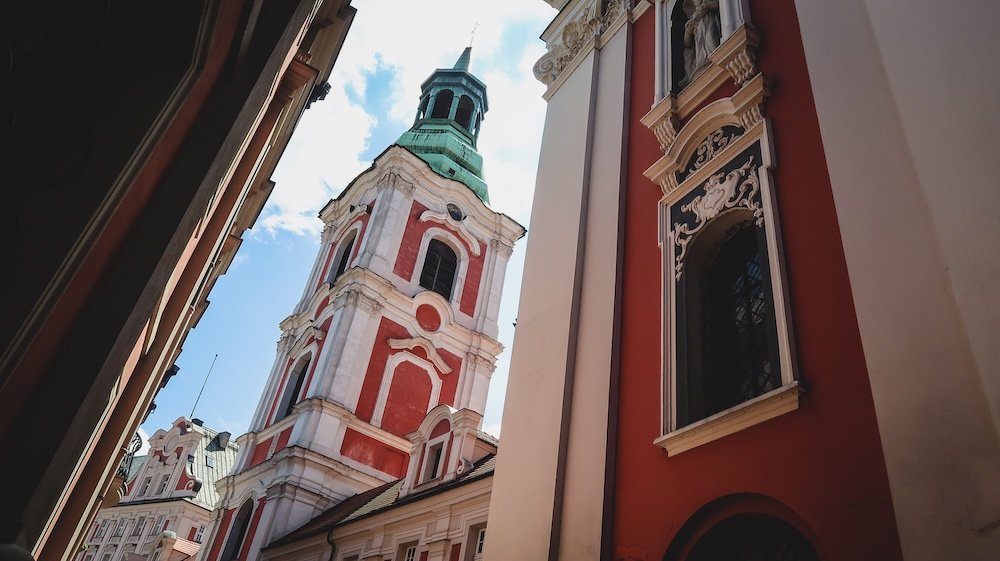
Tours For Visitors To Poznan, Poland
Exploring Poznan at your own pace is fun, but guided tours can unlock deeper layers of this city’s heritage. From historical strolls to wacky food crawls, these curated things to do help you connect with local stories and lesser-known gems. Below are recommended tours that highlight Poznan’s unique charm.
1) Old Town Walking Tour
A classic walking tour in Poznan’s Old Town remains a near-essentials for first-timers. Guides recount tales of the goat legends at the Town Hall, the city’s medieval expansions, and how the Market Square survived tumultuous periods. Often, they’ll point out hidden architectural quirks on merchant houses or mention whimsical local folklore you might miss on your own. The stroll typically ends near the Royal Castle or a scenic vantage point, so you can snap panoramic photos. If you love hearing backstories that bring each corner alive, this is an easy pick. In about two hours, you’ll walk away with a well-rounded Poznan foundation.
- Group Size: Typically 5–20 participants, though private tours can be arranged.
- Language: English tours are common, German also feasible.
- Tip: Some free (tip-based) tours gather near the Old Town Hall—check local listings for times.
Tip: Go mid-morning—you avoid big midday crowds while capturing better light for snapshots.
2) Regional Food Tasting Tour
For gastronomic explorers, a food tour weaves the best of local bites and cultural anecdotes. Picture sampling St. Martin’s croissants (rogale świętomarcińskie), nibbling on smoked sausage, or trying pyry z gzikiem (potatoes with cheese) at hidden eateries. Guides share how these dishes tie to Poznan’s heritage or festive celebrations. You might visit a bar mleczny (milk bar) for a retro ambiance, then step into a modern café for artisanal sweets. Sipping local craft beer or a small shot of Polish vodka can be part of the mix. Perfect for indulging your taste buds while gleaning culinary insight beyond mere menu descriptions.
- Duration: 2–3 hours with multiple tasting stops.
- Vegetarian: Let them know in advance—some tours adapt.
- Tip: Arrive hungry—portion sizes add up quickly, so skipping an early lunch helps.
Tip: Ask your guide for personal recipe secrets if you’re keen on recreating a dish at home.
3) Lake Malta & Activity Tour
Tired of city streets? A guided Lake Malta tour merges scenic relaxation with optional sports or amusements. The route might start near Old Town, then shift to the lake’s surroundings: a quick train or tram ride. At Lake Malta, participants can stroll, cycle, or even boat across calm waters if the weather permits. Guides highlight Malta Ski’s year-round slopes, kids’ attractions, or quiet nature spots for bird-watching. You’ll see how Poznan merges urban convenience with a dash of greenery. If you’re traveling with family or just love mixing nature into your city break, this offers a refreshing pivot.
- Activities: Bike rental, mini-golf, or short water rides—depends on your preference.
- Scenery: Summer crowds can be lively, but quieter months let you enjoy tranquil paths.
- Tip: Some tours end at a lakeside café, letting you savor watery views with a snack.
Tip: Wear comfortable clothes—you might want to try small sports activities or roam beyond paved trails.
4) Brewery and Pub Crawl
Night owls or craft beer enthusiasts can tap into a Poznan pub crawl or brewery tour. Local breweries highlight experimental ales, wheat beers, or stouts, often paired with Polish bar snacks. Friendly guides walk you through the city’s nightlife zones, sharing tidbits about modern Polish drinking culture. Each stop could range from a centuries-old cellar bar to a trendy microbrewery near the Imperial Castle. By night’s end, you’ll grasp Poznan’s youthful spirit, bridging craft brew mania with the city’s longstanding thirst for good times. It’s a sociable route to meet fellow travelers while tasting distinctly local flavors.
- Cost: Typically covers some tasting samples or discounted drinks at each stop.
- Pace: Usually 2–3 hours, with short walks between venues.
- Tip: Some crawls offer freebies like a welcome shot or snack plates.
Tip: Eat dinner first—Polish beer can be strong, so lining your stomach is a wise move.
5) Self-Guided App & E-Bike Tour
For those craving autonomy but still wanting some structure, a self-guided app tour or e-bike rental can be golden. You download a route that highlights must-sees, plus behind-the-scenes commentary triggered by GPS. This approach merges flexible timing with curated storytelling. E-bikes ease any uphill climbs or longer distances—especially if you plan to incorporate Lake Malta or Cathedral Island. The city’s moderate traffic suits this free-spirited exploration, letting you pause at random cafés or vantage points. If you’re comfortable charting your own path with minimal constraints, it’s an engaging compromise.
- Apps: Check official Poznan tourism or third-party city guide apps.
- Battery: Ensure your phone and e-bike have ample charge for your planned route.
- Tip: Some app tours bundle offline maps, handy if your data is spotty.
Tip: Combine e-bike exploration with short café stops to keep energy high and enjoy micro-breaks.
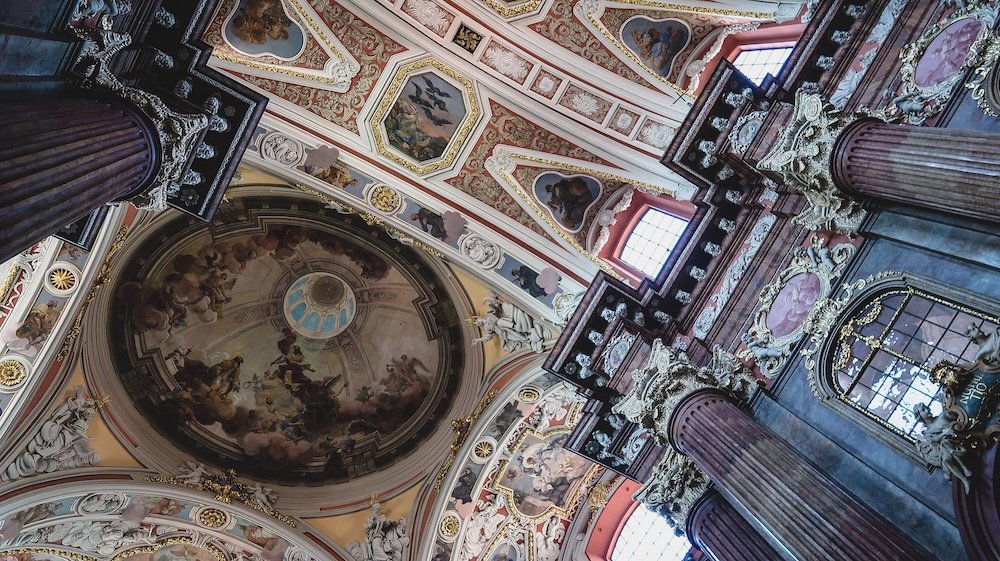
Poznan Accommodations Guide: Hotels, Guesthouses and Hostels
Poznan welcomes travelers with a broad lodging spectrum. Everything from plush hotels hugging the Old Town to budget stays near modern hubs. Your chosen bed will likely define how you tackle things to do each day. Ready to explore the city? Let’s parse your options.
Hotels
Poznan’s hotels cluster around two main zones: the Old Town area and the more business-oriented districts near the train station or commercial center. Some boutique establishments charm you with historic façades, intimate courtyards, and vintage-inspired décor. Larger chains offer predictable comfort—gym, reliable Wi-Fi, maybe a breakfast buffet. If you fancy waking up mere steps from the Old Market Square, book early: prime real estate goes fast, especially in peak summer or during trade fairs. Rates can climb if major events (like the Poznan International Fair) coincide with your visit.
- Mid-Range: ~€50–€80 per night, especially slightly outside the Old Town.
- Luxury: Could breach €100, with spa services or castle-like aesthetics.
- Tip: Some hotels bundle city tours or free city transport passes—ask at the front desk.
Tip: Check event calendars—trade fairs spike lodging demand, so plan around them if you can to avoid inflated prices.
Guesthouses & Boutique B&Bs
If you yearn for a homier vibe, guesthouses and B&Bs deliver. Expect a small set of rooms, personalized attention, and sometimes home-cooked breakfasts. Interiors might boast wooden beams, floral curtains, or unique local art. Hosts often love sharing insider tips—like the best local pastry shop or a scenic walk by the Warta River. Many are within or near the city center, keeping key attractions in strolling range. If your travel style leans toward quiet evenings and a familial touch, guesthouses feel just right.
- Atmosphere: Cozy, personal, often with a lounge or garden for chill-out moments.
- Breakfast: Typically includes Polish breads, cheeses, cold cuts, and possible homemade pastries.
- Tip: Some owners offer discounted tours or local experience tie-ins if you’re staying multiple nights.
Tip: Browse local booking sites—small B&Bs might skip big listing platforms, meaning hidden bargains for you.
Hostels
For budget or social-minded travelers, hostels in Poznan provide dorm beds or barebones private rooms. The vibe is youthful, with communal kitchens and lounge areas fostering backpacker camaraderie. Evening events—like pub crawls or game nights—often sprout spontaneously. Keep in mind, noise can spike on weekends if folks party late. That said, if you relish meeting new faces, or you’re simply cost-conscious, a hostel by the center or near the train station can be your launching pad for daily city exploits.
- Price: Dorms from €10–€15, private doubles around €30–€40.
- Facilities: Basic but often free Wi-Fi, linen, possibly a breakfast spread (though minimal).
- Tip: Book early for weekends or big festival dates—hostel beds vanish quickly then.
Tip: Bring earplugs—you never know if your roommates plan a pre-dawn flight or post-midnight return from a bar.
Apartments & Extended Stays
For travelers wanting more independence or a longer base, apartment rentals flourish in Poznan’s Old Town and modern neighborhoods. Cooking your own meals can cut costs, and living spaces let you relax after day tours. Families or groups find multiple-bedroom flats a budget-friendly alternative to multiple hotel rooms. You might land a renovated old tenement with historical flair or a sleek, new complex near the business district. Just confirm check-in logistics: owners might rely on self-check-in or scheduled meets.
- Platforms: Airbnb, Booking, or local rental sites—reviews matter for cleanliness and host communication.
- Location: If you prefer quiet nights, choose an area outside late-night bar zones.
- Tip: Some apartments include laundry machines, handy if you’re traveling extended weeks.
Tip: Verify parking or public transport if you’re carrying heavy bags or plan day trips by car.
Location & Timing Considerations
- Old Town: Perfect for immediate access to Stary Rynek, restaurants, and nightlife—yet crowds can build.
- Jeżyce or Wilda: Trendy districts slightly off-center, with bohemian cafés or markets.
- Trade Fair Zones: Closer to Poznan International Fair, practical for business travel but less atmospheric.
- Season: Summer can bring festival crowds, raising prices. Early spring or autumn might be calmer, cheaper.
Tip: If you prefer relaxed evenings, stay just outside the main square’s radius—quiet nights, but still near the action.
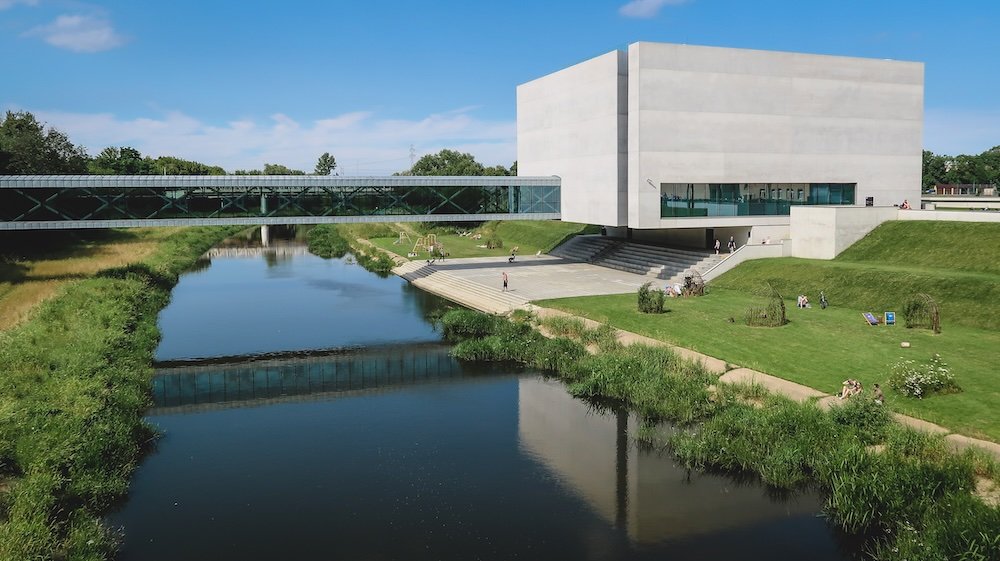
Day Trips From Poznan, Poland
While Poznan itself brims with things to do, the surrounding region teems with offbeat excursions and scenic highlights. If you have spare days or just yearn for a broader taste of Greater Poland, these day trip ideas round out your itinerary with nature, architecture, and local quirks.
1) Gniezno: Poland’s First Capital
Just an hour from Poznan by train or car, Gniezno is revered as the cradle of Poland’s statehood. Its iconic cathedral houses intricately crafted bronze doors, depicting biblical and national legends. Wander the old market for a smaller-scale take on Poland’s medieval squares, with pastel-colored townhouses. If you’re a history buff, museum exhibits detail how Gniezno shaped the early Piast dynasty. Plus, the city’s quieter vibe contrasts Poznan’s bustle, offering a relaxed step back in time. In a couple of hours, you’ll glean fresh insight into the nation’s Catholic and royal origins.
- Transport: Regular trains from Poznan Główny station, about 50–60 minutes.
- Highlights: The Gniezno Cathedral’s revered relics, statue-laden squares, local pastry shops.
- Tip: Some tours combine Gniezno with Ostrów Lednicki for a deeper Piast history arc.
Tip: Pop into a local café for rogale or sweet buns—smaller towns often produce delicious, unassuming treats.
2) Kórnik Castle & Arboretum
If you pine for a romantic lakeside fortress, Kórnik Castle stands about 20 km south of Poznan. You’ll find a neo-gothic palace hosting a museum of old weaponry, furniture, and family portraits of the noble Działyński clan. The adjacent Arboretum bursts with botanical wonders: azaleas, rhododendrons, and exotic trees. Stroll shady paths, feed ducks along the water, or admire seasonal blooms if visiting in spring. Kórnik’s calm air and fairy-tale vibe create an easy half-day break. The castle terrace also grants scenic glimpses across Kórnik Lake, perfect for snapping a postcard-like photo.
- Transport: Buses depart from Poznan’s main bus station, or rent a car for direct drive.
- Arboretum: Best visited April–May for vibrant azaleas, though lovely year-round.
- Tip: Some weekends host castle events—concerts, fairs, or historical re-enactments.
Tip: Combine the castle tour with a quick boat rental on the lake if time allows.
3) Wielkopolski National Park
For an outdoor escape, head south to Wielkopolski National Park, around 15–20 km from Poznan. Sprawling forests, sparkling lakes, and mild hills present a green lung for hikers, cyclists, or picnickers. Trails weave through birch groves, pine stands, and meadows teeming with birdlife. If you’re up for a short climb, try Osowa Góra for modest panoramic views. Barbecuing at designated areas or renting a rowboat on selected lakes are also popular. It’s your best bet for a nature fix near Poznan, perfect for recharging after city exploration.
- Access: By car or train to nearby stations (like Puszczykowo), then walk or cycle in.
- Trail Markings: Generally color-coded, though some signage is Polish-only.
- Tip: Check if you need a park ticket—some areas might require a small fee for entry or parking.
Tip: Carry insect repellent—woods and lakes can attract bugs in warmer months.
4) Rogalin Palace
Another stately gem: Rogalin Palace, about 20 km from Poznan, showcasing baroque and neoclassical elegance. Once the seat of the Raczyński family, it dazzles with decorative chambers, a vast library, and an art gallery hosting Polish and European masterpieces. The palace grounds also boast ancient oak trees—some standing for centuries—dotting picturesque meadows. You can tour the horse stables or meander the manicured gardens reminiscent of French influences. It’s a refined outing steeped in aristocratic legacy, balancing cultural immersion and nature’s hush.
- Interior: Opulent furniture, family portraits, a glimpse into noble lifestyles.
- Art Gallery: Surprises visitors with robust collections, including recognized Polish painters.
- Tip: The gardens sparkle in spring and summer—flowers, meticulously pruned hedges, and strolling peacocks if lucky.
Tip: Check opening hours—some palace or gallery sections can close for events or restoration.
5) Szreniawa Agricultural Museum
For a quirkier outing, Szreniawa’s Agricultural Museum lies about 15 km from Poznan. Dedicated to Poland’s farming heritage, it displays vintage tractors, harvest tools, and rural life dioramas. Children love climbing on retired machinery or sampling old-fashioned bread from demonstration stands. Festival days can see re-enactments of threshing, weaving, or cheese-making, celebrating the region’s agrarian roots. The surrounding farmland offers a pastoral break from city crowds. It’s a niche trip, sure, but charming for families or curious souls wanting a peek into countryside traditions.
- Getting There: Buses from Poznan center or a short drive; check timetables if aiming for a festival date.
- Family Fun: Interactive exhibits keep kids engaged, bridging farm life from yesteryear to modern times.
- Tip: Some weekends host craft fairs, letting you buy honey, wool, or pottery direct from local makers.
Tip: Plan for half a day—the museum can be breezed through quickly, but festivals or kids’ activities might stretch your visit.
Our Travel Vlog (Train Ride To Poznan) from Samuel and Audrey on YouTube (Hosts: Nomadic Samuel + That Backpacker)
Poznan Transportation Guide
Getting around Poznan effortlessly can elevate your entire city experience. With myriad things to do, you’ll want a sense of trams, buses, and beyond. This guide outlines how to navigate like a pro, ensuring you don’t waste time stuck or confused.
Arriving in Poznan
Poznan Ławica Airport sits about 7 km west of the city. Taxis or rideshare apps (like Bolt, Uber) typically cost ~40–60 PLN to central areas, taking 15–20 minutes off-peak. For budget travelers, city bus lines (e.g., 159) connect the airport to the main bus station or key tram hubs—journey times ~30 minutes or more, depending on traffic. If you’re arriving by train, Poznan Główny station stands near the city center, with trams and buses fanning out from there. Car rentals are also an option; if you plan day trips, collecting keys from the station or airport can streamline your itinerary.
- Train: Poznan Główny sees direct routes from Warsaw, Berlin, and other Polish cities.
- Peak Hours: Rush hours can inflate taxi fares or bus durations—plan around them.
- Tip: If traveling by bus from the airport, buy tickets at machines or from the driver with exact change.
Tip: Check flight times—late arrivals may see reduced bus schedules; a taxi might be your fallback.
Trams & Buses for City Travel
Poznan’s tram network forms the heart of public transport, fanning across neighborhoods and major attractions. Buses fill in gaps, covering routes trams skip. Tickets rely on time or zone: 15-min, 30-min, or longer. Validate upon boarding or face fines if inspectors appear. Many stops have digital boards showing next arrivals, though older lines might simply have posted schedules. With about 20 tram routes and countless bus lines, you can reach Lake Malta, Old Town, or suburban corners fairly easily.
- Night Lines: A skeleton service runs after 11 PM, so confirm times if you’re out late.
- Apps: JakDojade or local equivalents help plan multi-stop routes in English.
- Tip: Some 24-hour or 48-hour passes save if you’re riding multiple times daily.
Tip: Avoid peak crush (7–9 AM, 4–6 PM) if you hate sardine-like conditions, especially on popular routes.
Taxis & Rideshare
Taxis cluster near main squares, the train station, or big hotels. Reputable companies run meters—still, ask about approximate cost if you sense confusion. Rideshare (Uber, Bolt) typically costs less, with straightforward app use in English. If you’re bar-hopping or returning from a late event, rideshare ensures you’re not stuck waiting for sparse night trams. Keep your phone charged, though—peak times see surge pricing, or limited drivers if a big event’s on.
- Fare Range: Short city hops could be 15–30 PLN, airport runs 40–60 PLN.
- Language: Some drivers speak English basics, but showing them your destination on the map helps.
- Tip: Always check the car matches your app’s details—license plate, model, etc.
Tip: Monitor routes on your phone to deter any unscrupulous detours.
Driving & Parking
If day trips to Kórnik Castle, Rogalin, or beyond tempt you, renting a car can be beneficial. City traffic, though, intensifies at rush hours or near big fairs. Old Town has limited parking—narrow lanes and short-term zones might challenge you. Public garages do exist, often near central malls or big squares, but watch for fees. On-street spots typically require payment at meters, with a max limit. If your lodging provides parking, that’s gold, sparing you the hassle of searching each day.
- Road Conditions: Generally good, though watch out for tram tracks on city roads.
- Speed: 50 km/h in city, 90+ outside urban areas—cameras do catch speeders.
- Tip: If just city-hopping, public transport may be simpler than wrangling parking.
Tip: Sunday might see free parking in certain zones—check signage carefully.
Walking & Biking
Poznan suits pedestrians, especially around the Old Town and neighboring districts. Distances aren’t huge, and you’ll pass hidden courtyards or street art that buses skip. Biking is an option too: city bikes used to exist under systems like Poznański Rower Miejski—check if it’s operational. Some roads have bike lanes, but the historic core has cobblestones—be cautious. If your lodging offers rentals, that’s a plus. A short cycle to Lake Malta or across the Warta River keeps your day active and scenic.
- Foot Traffic: Most attractions group within a 20-minute radius near Old Town.
- Bike Safety: Use locks, as theft can occur in busy zones.
- Tip: Mornings are calmer—pre-noon wanders let you see squares in a serene glow.
Tip: Map out any hilly routes—though Poznan’s mostly flat, certain suburbs might surprise you with gentle inclines.
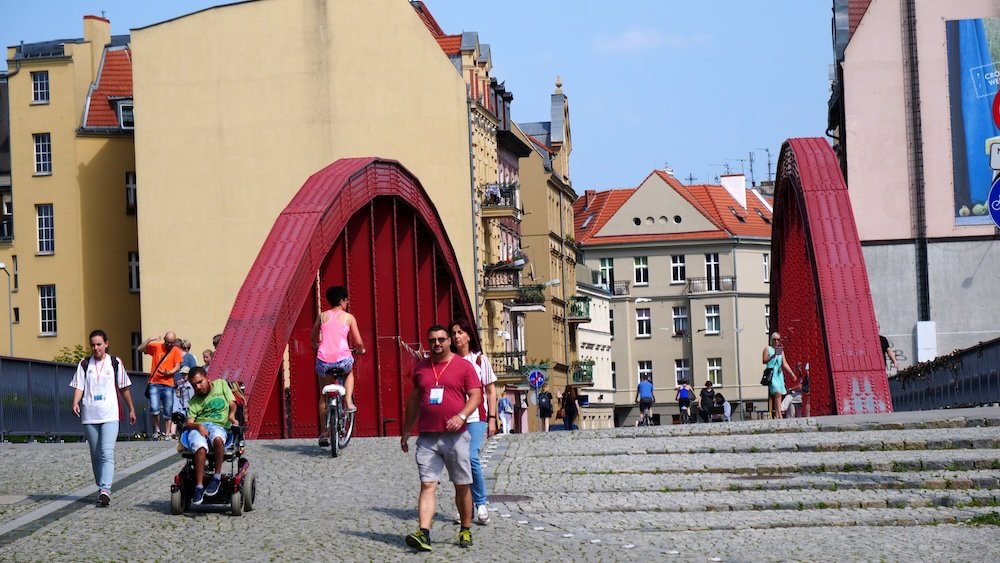
Poznan Travel Guide: Final Thoughts
Poznan fuses the warmth of a mid-sized Polish city with a legacy of royal power. Wandering its vibrant Old Market Square under pastel-colored row houses, you’ll realize why travelers keep praising this underrated hub. St. Mary’s goats, a proud local tradition, butt heads every noon high above the Town Hall. Meanwhile, regional specialties like rogale świętomarcińskie or hearty potato dishes root you in the region’s comforting flavors, ensuring meals become memorable pit stops.
In the background, Poznan’s threads through centuries of shifting rule: from Piast monarchy seeds on Cathedral Island to the more recent energy shaping New Town expansions. Each district reveals a different facet. Old Town bursts with Renaissance brio, while the Imperial Castle area channels turn-of-the-century ambition. Cathedral Island invites reflections on Poland’s spiritual and national roots, while Lake Malta delivers fresh air for a mid-journey pause. The city thrives on an unhurried ambiance: historical layers remain accessible but never overwhelming.
Lasting Impressions
Your daily approach might revolve around iconic sites. You may be climbing the Royal Castle for city vistas, stepping into Fara Poznanska’s baroque glow, or swinging by KontenerART’s edgy container-based art space. But letting the day unfold spontaneously can be just as rewarding. Small cafés appear around corners, local street art pops up unexpectedly, and occasionally you’ll catch a pop-up market or festival that injects extra spark into routine squares. If you have time, consider day trips to Gniezno, Kórnik Castle, or Wielkopolski National Park, broadening your perspective of Greater Poland’s countryside and lesser-known gems.
Ultimately, Poznan might not scream for the spotlight like Warsaw or Kraków. But that’s precisely its charm. It’s big enough to host museums, music events, and diverse cuisine, yet small enough for travelers to feel at ease in just a few days. Vibrant, but not frantic. Historic, but also youthful. The city welcomes you to embrace its corners at your pace—mornings among centuries-old spires, afternoons savoring sweet coffee or earthy potato dishes, evenings chilling by the Warta River or diving into craft bar scenes.
